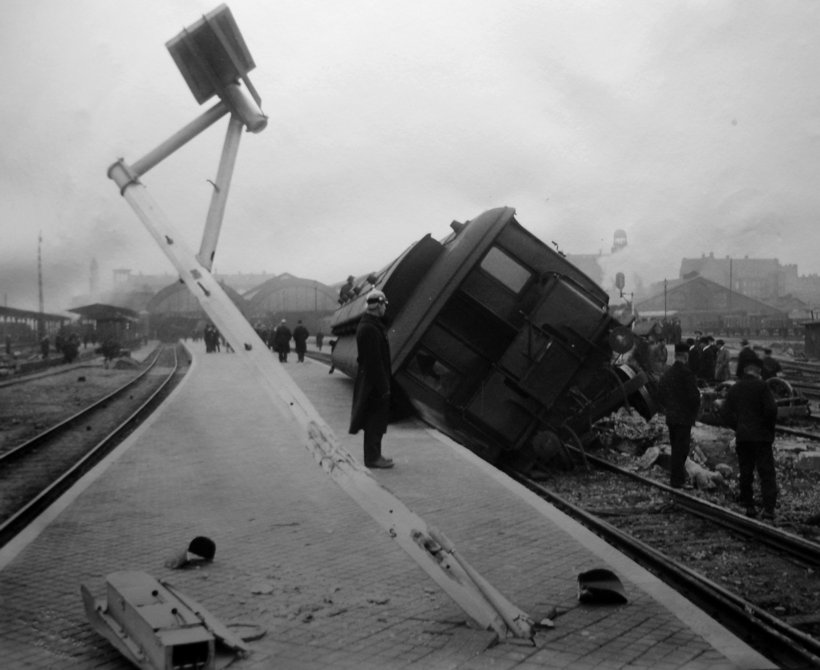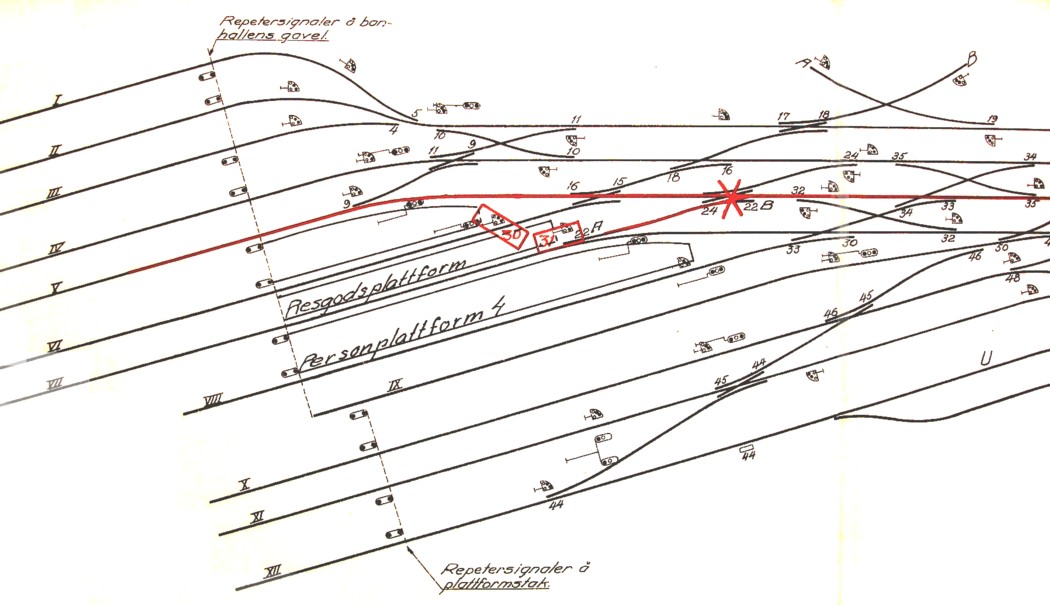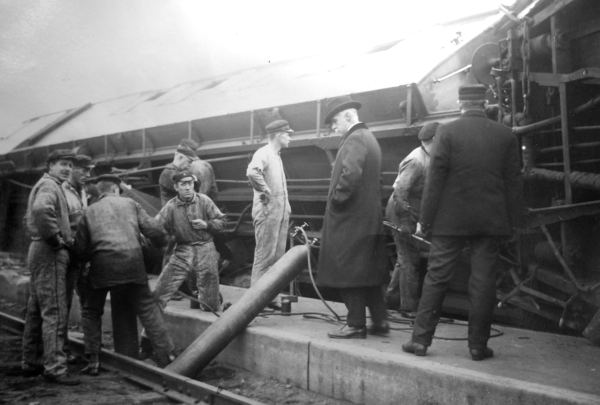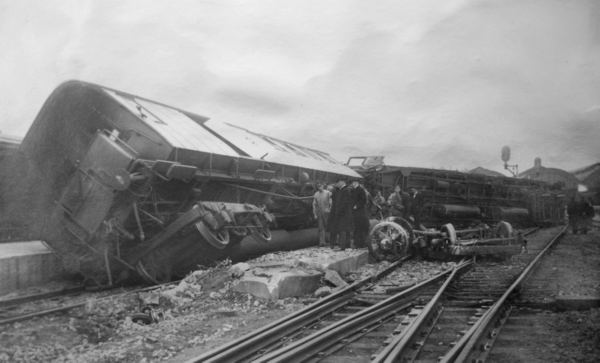
One of the new signals lies on the ground. Picture from the swedish railway museum
It was a guard who fell out of the train. He was killed. Two passengers were injured. The accident was thoroughly investigated - after all the new interlocking was supposed to make it impossible to throw a switch while a vehicle was on the switch. Interviews where held with the staff on duty at the time of the accident, with chief signal engineer Ture Hård and with Mr Proud from Westinghouse. Mr Proud also had to answer written questions. American terms like "interlocking machine" and "tower" where used, so perhaps an expert from the US had been consulted?
The investigation showed that the accident was the result of the combination of a powerful signalman, bad design of the frame and faulty assembly of the frame sections. The switch lever in question was at the border between two frame sections. The signalmen had until recently worked the mechanical frames, and were probably used to levers requiring a heavy pull.


